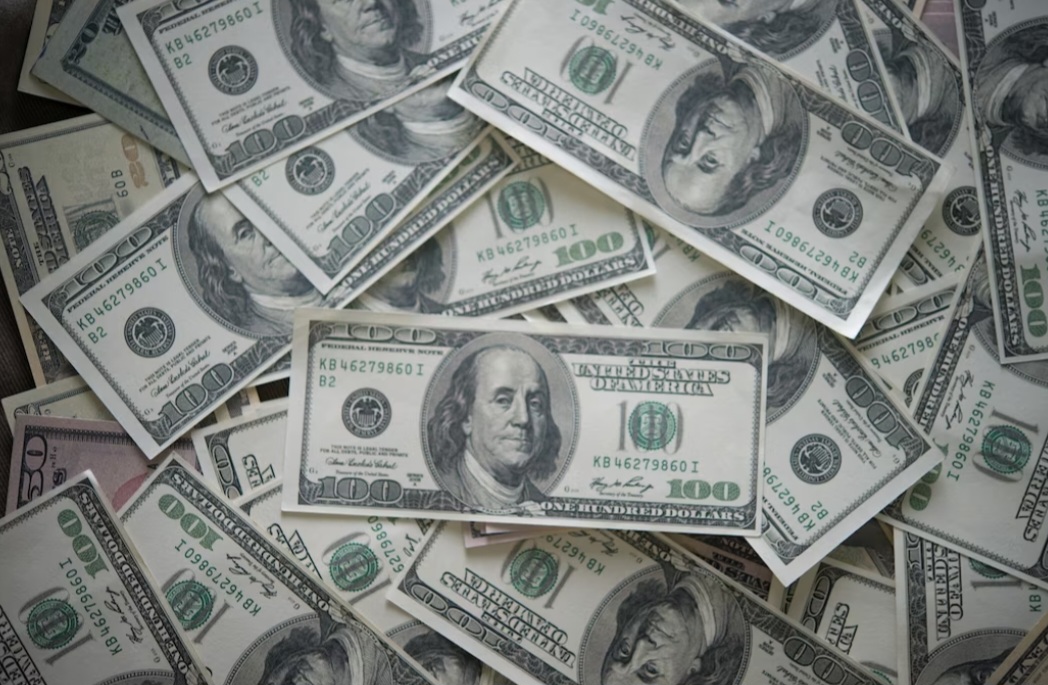Today, the dollar rate in Pakistan is 279.6 PKR in the open market and 278.36 PKR in the Interbank exchange. The rates can change daily because of different factors in the economy. Generally, banks offer slightly lower rates compared to currency exchanges or the open market.
Dollar rate today and yesterday
Yesterday’s Rates
Interbank: 280 rupees
Open Market: 282 rupees
Today’s Rates
Interbank: Decreased by 1 rupee to 279 rupees
Open Market: Decreased by 1 rupee to 281 rupees
Today the dollar has become cheaper compared to yesterday both in the interbank and open market. In the interbank, it went from 280 to 279 rupees, and in the open market, it went from 282 to 281 rupees.
Currency exchange rates in Pakistan’s open market are not quite similar to the rates in the inter banks, especially the dollar rate.
What influences the dollar rate
The dollar rate in Pakistan is influenced by both local and global factors. Locally, things like how much demand there is for dollars and how much of it is available play a big role. When there’s a high demand for dollars, its value goes up compared to our local currency. Also, economic stuff like interest rates and inflation rates can make a difference. If interest rates are higher here than in other places, it can attract foreign investors who need our currency, which strengthens it. But if inflation rates are high, it can weaken our currency. Another thing is how stable our government is and how well our economy is doing. If things are stable and going well, foreign investors feel more confident and want to invest here, which makes our currency stronger. But if there’s uncertainty or problems, it can make our currency weaker. Government policies also matter, like how they manage trade and money. Globally, things like how well the world economy is doing, conflicts between countries, changes in oil prices, and how we’re doing business with other big economies also affect our dollar rate. Because we’re part of the world economy, all these things outside our country can cause our dollar rate to go up or down. So, it’s a mix of what’s happening here and what’s happening around the world that decides how much our currency is worth compared to the dollar.
Dollar rate affects on economy
The dollar rate affects different parts of the economy in different ways:
1. When the dollar rate is high, it makes imports cheaper but raises the cost of exports. This can cause a problem called a trade deficit if a country imports more than it exports.
2. Changes in the dollar rate can also make things more expensive in the country, especially imported items. This can lead to inflation, where prices go up.
3. The strength or weakness of our local money can influence if foreigners want to invest in our country. If our money is strong, it’s more attractive for them because they get more for their money. But if our money is weak, they might not want to invest here because they won’t make as much when they change their profits back to their currency.
4. If the dollar rate goes up, it can make it harder for the government to pay back money it owes in foreign currencies. This can put stress on the government’s finances.
5. Changes in the dollar rate also affect how much people spend. If the local money gets weaker, imported goods become more expensive, so people might not buy as much.
6. On the bright side, a weaker local currency can make it cheaper for tourists to visit, so more tourists might come to the country.
7. Lastly, our central bank might change its policies to control things like inflation and exchange rates in response to changes in the dollar rate. They do this to try to keep the economy stable and growing.
Faqs
1. What is the Dollar rate today in Pakistan?
The current Dollar rate in Pakistan is RS. 278.36, as per the interbank rate .
2. What is the dollar rate in Pakistan today’s open market?
The dollar rate in the Pakistan open market today stands at 279.6, which may vary from the Interbank rate.
3. How much is 1 USD to PKR Open Market?
1 USD is equivalent to 282.4 PKR in the Open Market exchange rate.
